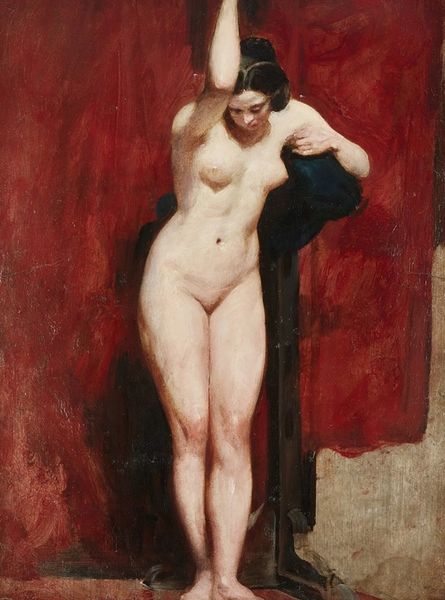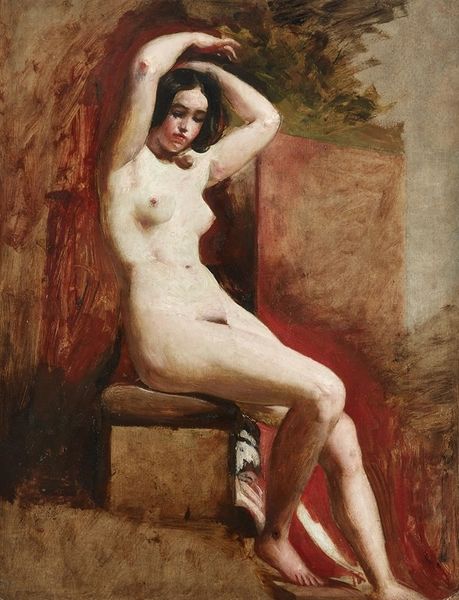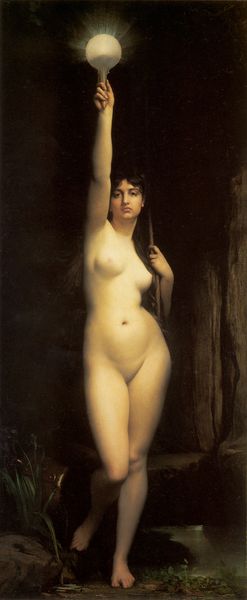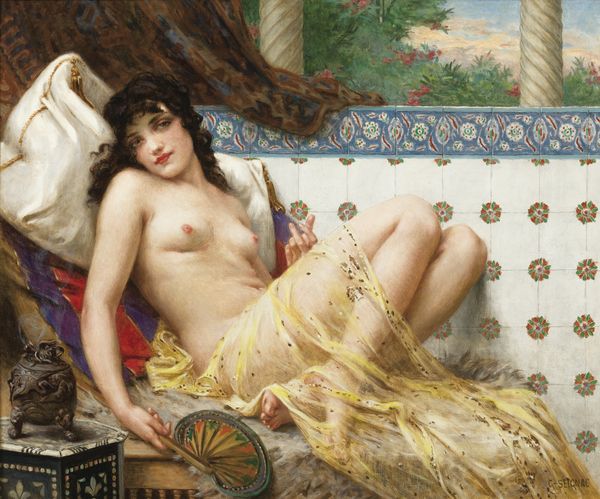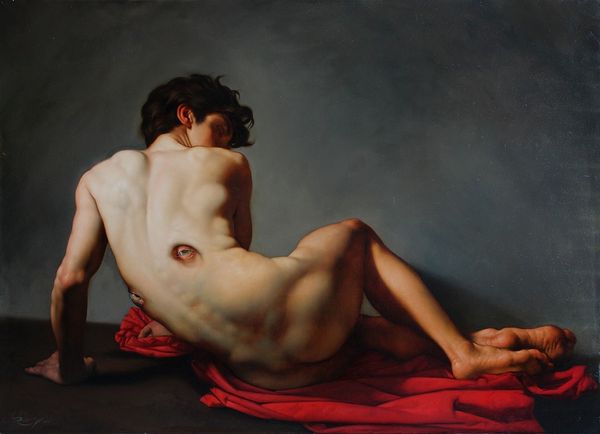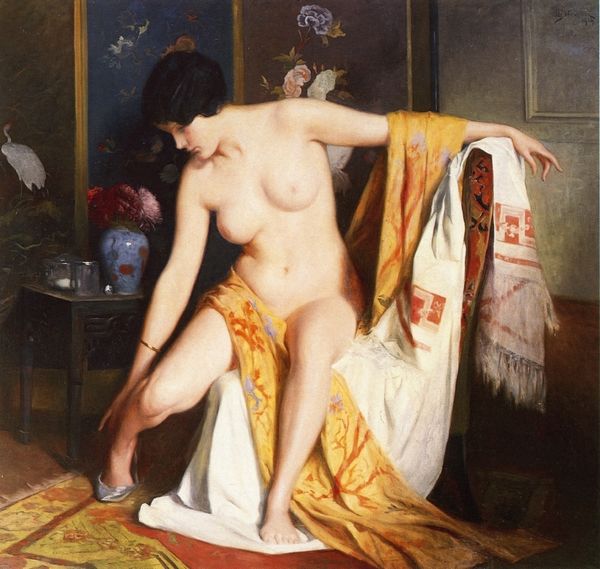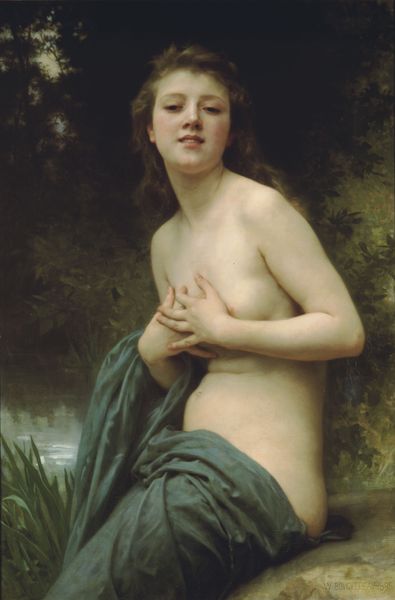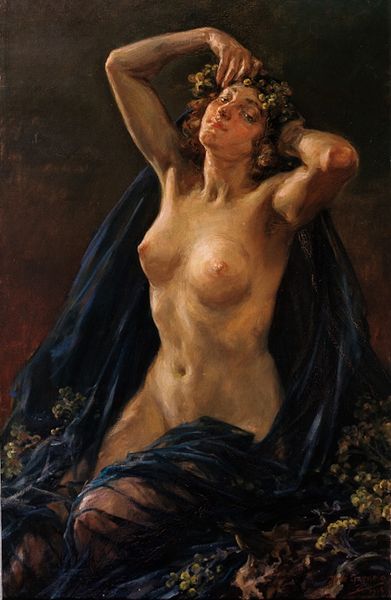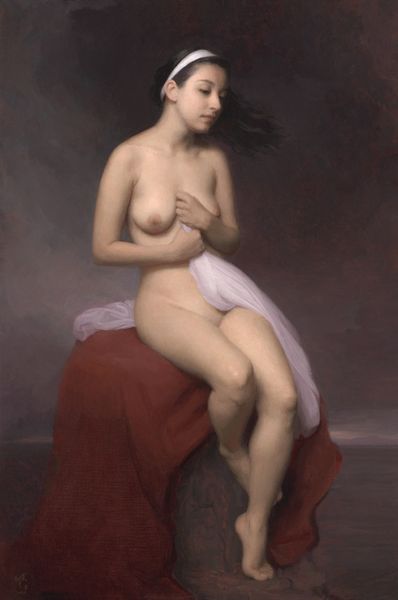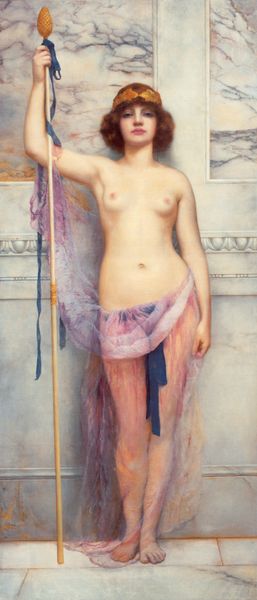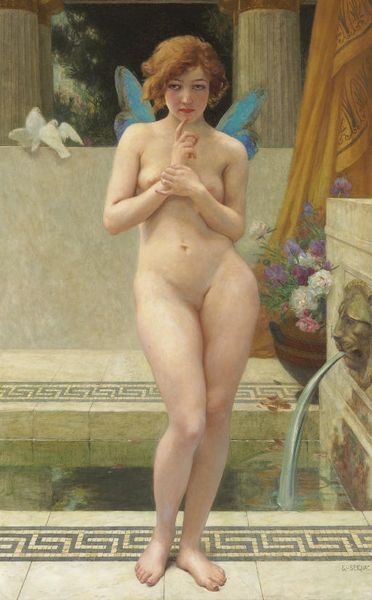
painting, oil-paint
#
portrait
#
narrative-art
#
painting
#
oil-paint
#
figuration
#
orientalism
#
academic-art
#
nude
Copyright: Public domain
Curator: Luis Ricardo Falero's "Orient" certainly commands attention. Its oil on canvas medium beautifully captures an image of a woman that seems to inhabit an imagined space, almost a staged theatre backdrop. What are your first impressions of the painting? Editor: I'm immediately struck by the opulence implied by the textures of the carpet she is seated upon contrasted against the hard, geometric walls and surfaces. I would like to know more about those textiles. Curator: Given Falero's Orientalist leanings and the title itself, one could read this as an imagined scene invoking 19th century stereotypes and European colonial narratives surrounding the East. She could also be seen in reference to Delacroix’s “Women of Algiers in their Apartment”, another work considered an expression of orientalism in painting. Editor: Indeed, but it’s vital to understand the material context and social forces in play, shaping not only artistic production but also shaping colonial power structures. Curator: The staging itself is a perfect demonstration of what, I think, makes Falero such an important and troubling figure in 19th century art. The bare flesh plays into European notions of eroticism while subtly referencing a romanticized "Orient," which says more about European desires than anything concrete. I wonder how feminist theory helps contextualize it. Editor: For me, the way she is seated is quite reminiscent of early industrial settings - could this position reference how laborers were positioned within early mechanized manufacturing facilities? Also, her adornment might imply luxury. What materials are those adornments made from, how would access to them at the time this was painted define her positionality? Curator: That reading actually brings to light the complex interplays that characterized the 19th-century social and material landscape. There's no simple consumption here, as her adornment also speaks to cultural hybridity of which colonial rule engendered. Editor: Looking at her body again I am reminded of Courbet’s paintings; what material references were they drawing upon and could this tell us something more about this artist’s place in time and relative access? The relationship between subject and society is one driven by the conditions of its making and our consumption thereof. Curator: Thinking about how those dynamics are embedded within the very structure of the work—it certainly speaks volumes. Falero does encourage these critical, and often challenging, questions around cultural representation, identity, and the act of viewing itself. Editor: He truly does. He encourages questions around consumption, craft, access and influence.
